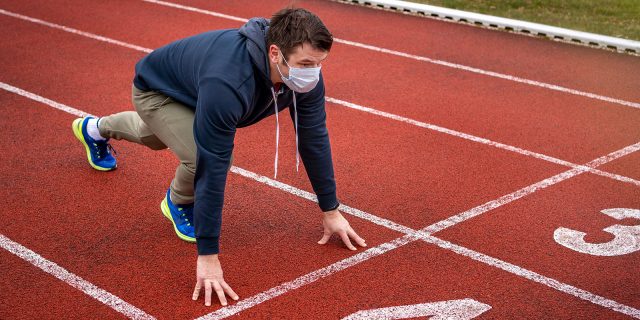
How to get back to training if you have had a coronavirus
Listen to your body and be extremely careful, even if you have had COVID-19 in a mild form.

Jordan Metzl.
Sports physician, author of health and fitness books.
For the past 20 years, when patients have asked me how they should exercise while they are recovering from a viral infection like the flu, I have given the same advice: listen to your body. If exercise usually makes you feel better, you can exercise. But the coronavirus requires a different approach.
At the beginning of the pandemic, when the first wave of patients were recovering, my colleagues and I noticed that some had difficulty returning to their usual level of physical activity. Some complained of severe fatigue and breathing problems, while others felt they could not exercise as much as before.
In addition, doctors began to record more cases of myocarditis than usual. This inflammation of the heart muscle weakens the heart and, in rare cases, leads to sudden cardiac arrest. Also, blood clots began to be detected in many. Most surprisingly, these problems appeared in patients who had no previous health complaints and had had COVID-19 in a mild form.
Researchers continue to study the data, but meanwhile we are hearing more and more about how even professional athletes are having trouble getting back into shape after contracting the coronavirus. Members of the U.S. Olympic rowing team told us that they felt constantly tired for weeks after their illness.
Many amateur athletes complain of lingering breathing problems. Respiratory complications can last for weeks or even months after infection.
To help people safely return to physical activity after mild to moderate coronavirus, my colleagues and I have compiled a list of recommendations.
We urge caution than before, as the virus has unpredictable effects on each individual.
Anyone who has had severe coronavirus and has been treated in the hospital should definitely consult a doctor before returning to sports. But even if you had a mild or asymptomatic form of the disease, do not rush to exercise as usual. Move gradually and monitor your body condition. Here are our main recommendations.
1. Don’t exercise if you are still sick
If you have a high fever, cough, chest pain, shortness of breath or rapid heartbeat at rest, refrain from exercising. It is not only uncomfortable, but also dangerous to exercise with these symptoms.
2. Return to training gradually
Even if you have had a mild form of coronavirus and have had no problems breathing, don’t rush. Wait until you are symptom-free for at least seven consecutive days. After that, start exercising at half your normal intensity and increase it as gradually as possible, step by step.
3. Stop if your symptoms return
If you experience chest pain, fever, heart palpitations, or difficulty breathing after working out, don’t risk your health. Postpone the sport and see your doctor.
4. Consult a cardiologist
Be sure to see a cardiologist before returning to sports if you have experienced chest pains, lack of oxygen or severe fatigue during your illness. The specialist will schedule the necessary tests to check the condition of your heart and help you determine what level of physical activity is right for you now.
5. Get tested for coronavirus
If you’ve had a cold or flu, get tested for coronavirus just in case. Only then decide how much exercise you can do.
And remember: doctors can run tests, but you are the one who has studied your body best. You know how you usually feel going up the stairs, running, or biking. Has exercise become harder for you? Have you noticed any changes in your body? If so, talk to your doctor before you start exercising intensely.
Even if you have not been diagnosed with coronavirus, pay attention to how you feel. For many, the disease is asymptomatic or with general symptoms like gastrointestinal problems, fatigue and muscle pain. If you start to feel differently during your workouts, slow down and consult your doctor.

